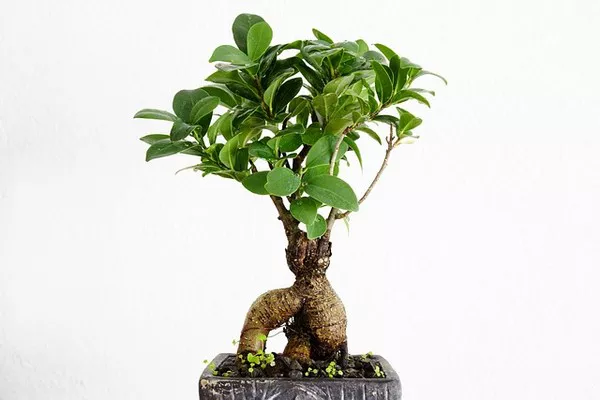Bonsai, with its roots deeply embedded in ancient Eastern culture, has captured the hearts of enthusiasts worldwide. Among the diverse forms of bonsai, tree bonsai holds a special allure, embodying the majestic beauty of nature within a confined space. Crafting a tree bonsai demands patience, skill, and an understanding of horticulture. In this comprehensive guide, we delve into the intricacies of creating tree bonsai, from selecting the right specimen to nurturing its growth over time.
Understanding Tree Bonsai: A Fusion of Art and Nature
Tree bonsai, known as “Yose-ue” in Japanese, translates to “multi-tree planting.” Unlike other forms of bonsai that mimic the appearance of mature trees in miniature, tree bonsai feature multiple trees planted together, often depicting scenes from forests, groves, or landscapes. The artistry lies in harmonizing the various elements—trees, foliage, branches, and roots—to evoke a sense of natural beauty within a confined space.
Selecting the Right Specimen: The Foundation of a Tree Bonsai
The journey of crafting a tree bonsai begins with selecting suitable specimens. Unlike single-tree bonsai, tree bonsai require multiple trees that complement each other in size, shape, and visual appeal. When choosing specimens, consider factors such as species compatibility, growth rate, and aesthetic coherence.
Opt for species with compatible growth habits to ensure harmonious development within the confined space of the bonsai pot. Additionally, select trees with contrasting foliage colors, textures, and leaf sizes to create visual interest and depth within the composition.
Preparing the Trees for Bonsai Cultivation: Pruning and Styling
Once you’ve selected the specimens, the next step involves pruning and styling to shape the trees according to your envisioned design. Start by trimming away any dead, damaged, or overgrown branches to establish the basic framework of each tree.
Utilize wire and bonsai techniques such as wiring and guy-wiring to manipulate the branches into desired positions. Exercise caution to avoid causing damage to the delicate bark and branches, ensuring gentle yet firm manipulation for optimal results.
Creating Harmony in Composition: Design Principles for Tree Bonsai
The art of crafting tree bonsai extends beyond mere horticulture; it embodies principles of design and composition. Embrace elements of balance, proportion, rhythm, and harmony to create visually captivating bonsai compositions.
Establish a focal point within the arrangement, drawing the viewer’s eye towards a central tree or distinctive feature. Use asymmetry to mimic the irregularity of natural landscapes, avoiding rigid or overly symmetrical layouts that appear contrived.
Pot Selection and Repotting: Enhancing Aesthetic and Health
Choosing the right pot is crucial for enhancing the aesthetic appeal of your tree bonsai while providing adequate space for root development. Opt for pots that complement the style and size of your bonsai composition, ensuring proper drainage and airflow to promote healthy growth.
Regular repotting is essential to prevent root binding and maintain soil vitality. Repot your tree bonsai every one to three years during the spring or early summer months, carefully pruning and untangling the roots before transplanting into fresh bonsai soil.
Nurturing Growth and Development: Care and Maintenance
Successful tree bonsai cultivation hinges on diligent care and maintenance. Provide adequate sunlight exposure, ensuring that your bonsai receives filtered sunlight or partial shade to prevent leaf burn and dehydration.
Monitor soil moisture levels closely, watering your bonsai when the top layer of soil feels dry to the touch. Avoid overwatering, which can lead to root rot, and fertilize your tree bonsai regularly during the growing season to replenish essential nutrients.
Patience and Persistence: Cultivating the Art of Tree Bonsai
Above all, cultivating tree bonsai demands patience, dedication, and an appreciation for the slow-paced rhythms of nature. Embrace the journey of nurturing your bonsai over time, allowing it to evolve and mature with each passing season.
Be prepared to adapt your techniques and strategies as your bonsai grows, responding to its changing needs and characteristics. Remember that mastery in bonsai cultivation is not achieved overnight but through a lifelong pursuit of knowledge, skill, and artistic expression.
Conclusion
Crafting tree bonsai is a labor of love, blending the artistry of design with the delicate nuances of horticulture. By selecting suitable specimens, mastering pruning and styling techniques, and adhering to principles of composition and care, enthusiasts can create stunning tree bonsai compositions that captivate the imagination and evoke the timeless beauty of nature in miniature. With patience, persistence, and a deep reverence for the natural world, anyone can master the art of crafting tree bonsai and experience the profound joy of nurturing living works of art.


